Everything You Need to Know Before Buying an Early Dodge Viper
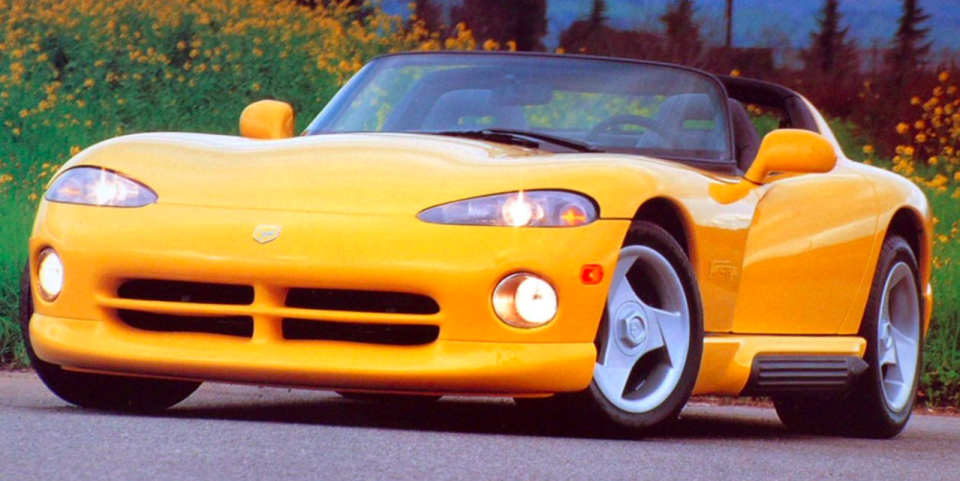
The original Dodge Viper is one of the coolest cars to come out of the Nineties. Cartoonish looks, a lightweight body, and a naturally aspirated V-10 engine making in excess of 400 horsepower immediately powered it to the top of the must-have supercar list, rivaling Corvettes, Ferraris, Lamborghinis, and Porsches of the era. Best of all? Early examples have become about as affordable as a new Toyota Camry, meaning pretty much anyone can own one.
Thinking about picking up an old Viper of your own? We’re glad to hear it. Here’s how to find the best one.
Chrysler’s Supercar Awakening
The Viper was the brainchild of Bob Lutz, then President of Chrysler and now a Road & Track contributor. His goal was to build a flagship sports car with extreme proportions and a big engine up front, inspired by the Shelby Cobra. Chrysler designer Tom Gale put together a clay model, engineers devised a high-performance V-10 to power it, and CEO Lee Iacocca gave the idea the green light. The Viper made its official debut as a concept at the 1989 Detroit Auto Show and went into production with nearly identical looks in 1992 as the Viper RT/10.
Under the Viper’s massive one-piece clamshell hood sits Chrysler's 8.0-liter naturally aspirated V-10. When the Viper was in the planning stages, Dodge's truck division was hard at work on a heavy-duty iron-block V-10 engine for 2500 and 3500-series Rams. Thus, the sports car team chose an engine with the same displacement and layout, though the Viper engine does not share any parts with the truck engine.
Lamborghini was owned by Chrysler at the time, but contrary to popular belief, the Italian automaker didn’t design or assemble the Viper engine. Lamborghini did, however, use its connections in the aluminum industry to help Chrysler develop prototype castings for the aluminum-block Viper engine, according to The Drive. The Italian company also helped graft a Formula 1-style external cooling manifold onto the block to keep temperatures down, along with adapting new technology including sequential multipoint fuel injection and dual throttle bodies, each with their own intake plenum. The engine was rated at 400 horsepower and 450 lb-ft of torque from the factory—big numbers now, and positively jaw-dropping in the early Nineties. Redline was 6000 rpm.
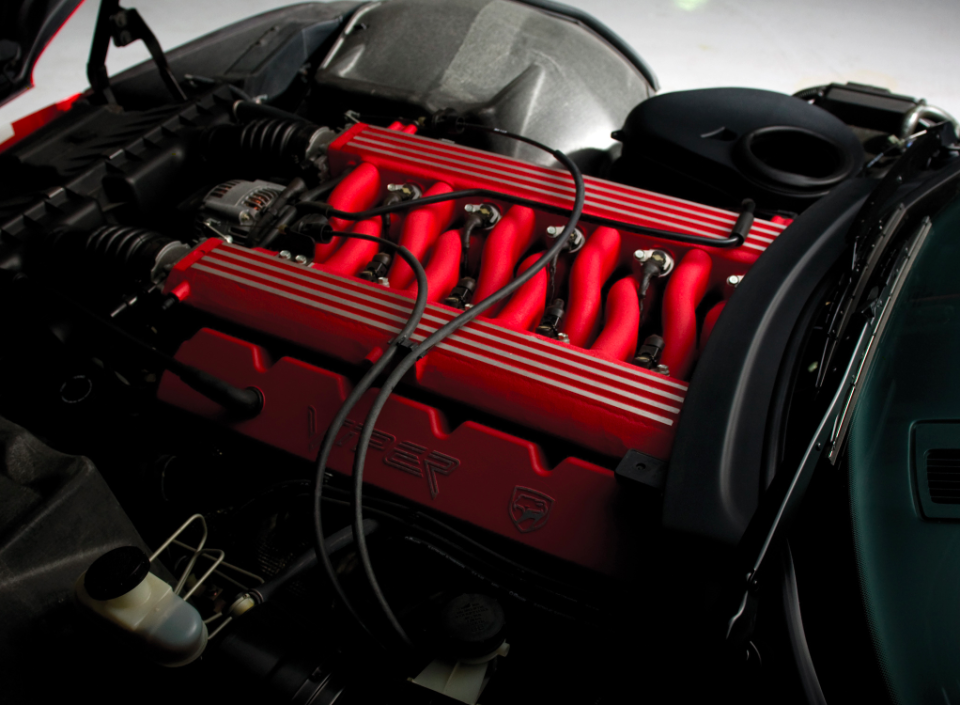
Early Vipers are exceedingly hardcore cars, with no air conditioning, no ABS, and no traction or stability control. The door windows are plastic, and there’s no real roof, just a removable cloth piece for emergencies. The lack of creature comforts undoubtedly helped performance—we measured a sub-five-second 0-60 and a quarter-mile time of just over 13 seconds during our 1992 first drive.
Thanks to a mostly fiberglass composite body surrounding a rigid tubular steel backbone frame, the Viper didn’t demonstrate any cowl shake or steering-column jolts in our in-period review. Underneath the body sits a fully independent suspension with Koni coil-over shocks with eight inches of travel. Interestingly, the lower control arms and the rack-and-pinion steering were taken from the Dodge Dakota pickup.
Dodge made air conditioning optional in 1994, and gave the Viper a light overhaul for the 1996 model year. Updated roadsters got new rear-exit exhausts to replace the infamous side pipes, which had a habit of burning unsuspecting passengers' calves. Other updates included a 15-horsepower increase, an optional fiberglass snap-on hardtop, a stiffer tubular frame, cast aluminum rather than steel suspension components, and a new five-spoke wheel design in place of the iconic three-spokes.

Also new for ‘96 was the Viper GTS coupe, with a real fixed hardtop and power side windows. The GTS got a higher-compression engine with updates to the intake and exhaust, as well as a revised cooling system. It was rated at 450 horsepower, a 35-horsepower improvement over the RT/10. The GTS also got a reworked interior, driver and passenger airbags, exterior door handles (on early roadsters, you entered by reaching through the window to pull the interior door handle) and adjustable pedals. All of these GTS comfort features and engine upgrades made their way to the roadster for the 1997 model year.
Dodge introduced a special-edition GTS coupe called the Viper GT2 for the 1998 model year, celebrating the Viper’s 1-2 class finish at that year’s 24 Hours of Le Mans. The GT2 got a massive rear wing, thin-spoke BBS wheels, aero improvements, and an improved air filter design that bumped horsepower to 460. Just 100 were built. The next year, Dodge introduced an ACR variant to the Viper lineup as a $10,000 option. It got the 460-horsepower engine and the GT2 wheels, and ditched the stereo, air conditioning, and fog lights for weight savings.
So Which One Is Right for Me?
That depends how much you want to spend, and what sort of body style you prefer. Early Vipers can be found for sale in the mid-$20,000 range for first- or second-year models with some miles on the clock, with prices running into the six figures for low-mileage special edition cars in perfect condition.
If affordability is your goal, you’ll likely be aiming for a Viper built before 1996. That means a roadster with the least powerful V-10 and no real roof or windows. These cars can be routinely found for less than $30,000 in decent condition with reasonable mileage. And just because you’re getting the lowest-horsepower Viper doesn’t mean it’s going to be a bad time. Remember: These first few years were the only early Vipers that got side-exit exhausts and those iconic three-spoke wheels. And it’s still a V-10 supercar with some truly outrageous looks.
Dodge understood that not everyone wants a fair-weather-only roadster—that’s why the automaker added the GTS to the mix starting in ‘96, after all. A real roof, airbags, and actual side windows made it less of a toy, and a much-improved interior and 50 more horsepower made it more appealing to more people. Of course, having all of those things means spending more money—a GTS will command around $20,000-$30,000 more than a comparable RT/10.
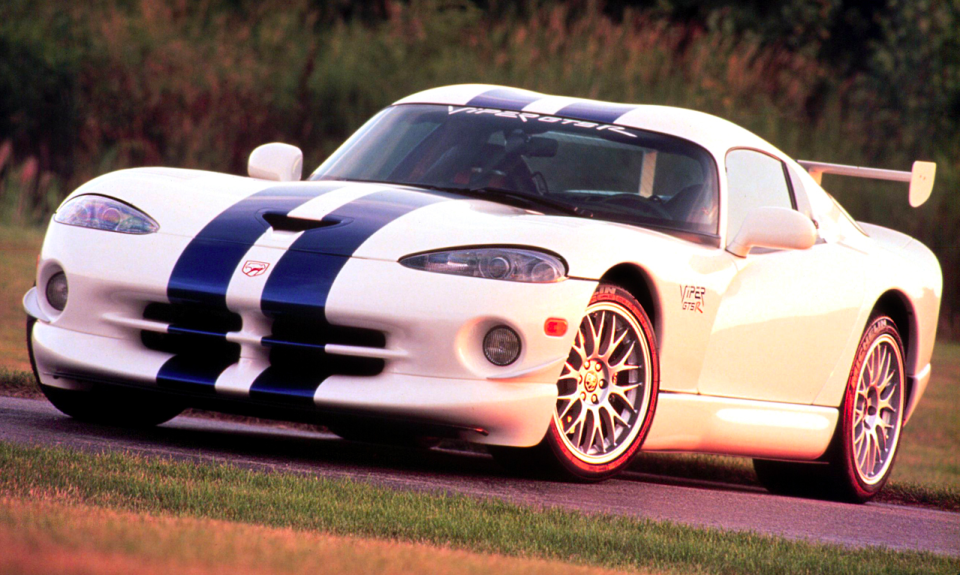
More of the collector type? The GT2 and ACR variants of the original car are the most desirable among the Viper faithful, and prices reflect that. In 2018, a GT2 with under 4500 miles on the clock sold for €94,300 (around $106,000) at an RM Sotheby’s auction. Price isn’t the only obstacle on the road to GT2 ownership, either—since Dodge built just 100 examples, they rarely come up for sale publicly. That means you have to be patient until one shows up, and move quickly when it does.
ACRs are a bit more reasonable—they're more along the lines of a desirable trim level, rather than a limited-production special edition. These cars usually sell in the $50,000-$60,000 range, or less if the mileage is on the higher side. It’s worth noting that before you commit to an ACR, you should take into account the model’s lack of air conditioning and stereo. The whole point of a GTS coupe is its improved livability. Take out two of the car’s most livable features, and you’re left with a track special that’s not meant for cruising.
What Do I Have to Look Out For?
Despite its outrageous looks, wild proportions, and breathtaking performance, the Viper isn’t all that complex. Many of its parts are shared from other Chrysler products of the era, meaning that routine maintenance and repairs are often easier than you’d expect. There are some other costs you have to keep in mind, though.
While many of the Viper’s mechanical bits are easy to source, cosmetic items like body panels, wheels, and exterior trim can be next to impossible to find. Compared to most Chrysler products, the Viper was an extremely low-production vehicle, so replacement fenders, trunk lids, doors, and bumpers have been in short supply for years. Picked up a parking lot bump and need to replace your clamshell hood? Don’t be surprised when you get hit with a five-figure bill to replace it.
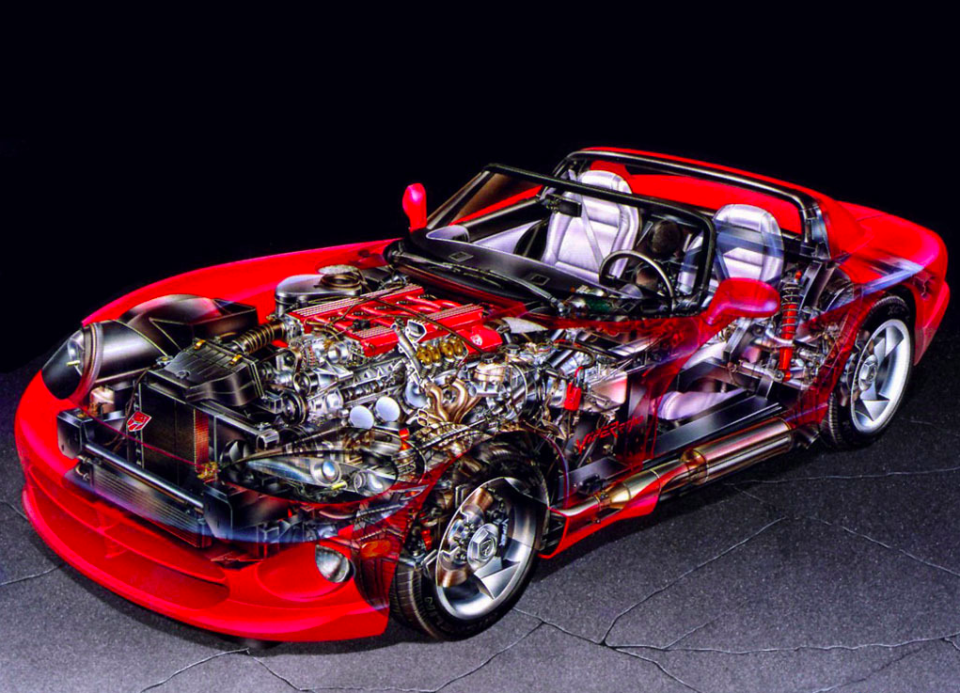
Early Vipers (think 1991-1993) suffered from piston ring issues, which led to high oil consumption problems. This led to several engine replacements early on, while the cars were still under warranty. If you’re the type that needs numbers-matching everything, it may be worthwhile to compare block numbers to VINs. Other well-known issues include leaking from the thermostat gasket on earlier Vipers, and leaks from the rear main seal and timing cover gaskets on later production cars.
As Vipers begin to age, rubber pieces like coolant hoses, bushings, and belts will begin to crack and fail, so we recommend getting a pre-purchase inspection—ideally from a shop familiar with Vipers—to find any underlying issues that are hard to spot. The power steering pump pulley is also a well-known failure item. And if you spot sagging doors on a GTS model, don’t worry, it hasn’t been in an accident. According to The Drive, Dodge used the same door hinges on roadsters and coupes, and the weight of the power window motors and glass made the coupe doors likely to sag over time. The issue can be fixed easily by adjusting the hinges.
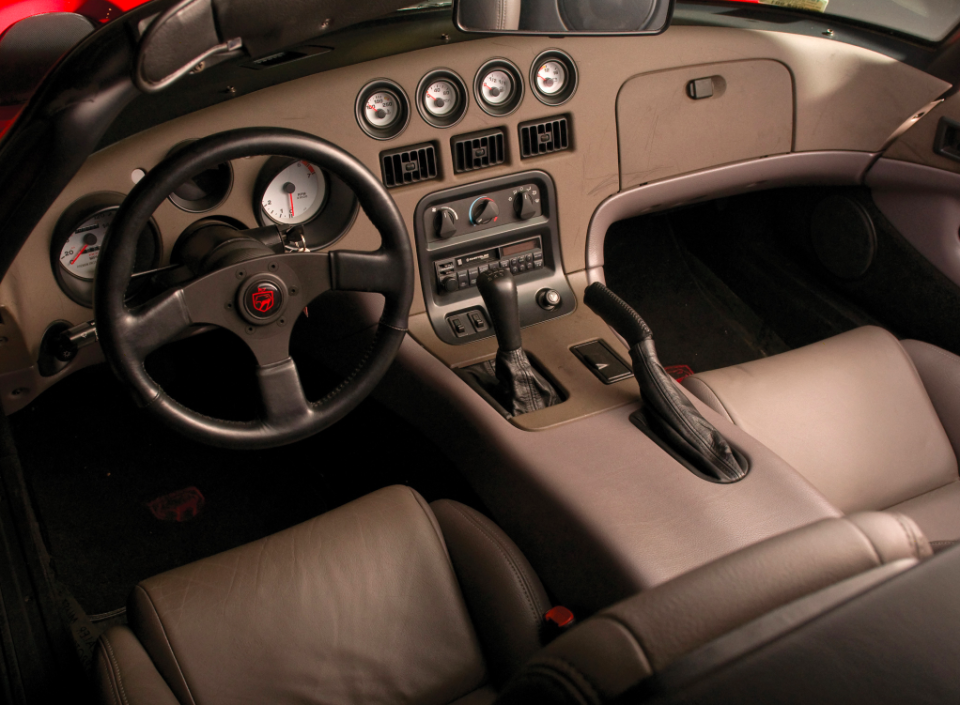
Perhaps the most well-known maintenance issue for early Vipers is tire availability. From the factory, the car came with 275/40-17s up front, and 335/35-17s in the rear—not a size you see on many other cars. Viper clubs often set up group buys to get new tires at a reasonable price. Later on, the car got a slightly more accessible 18-inch wheel and tire package, so keep that in mind if you plan on burning rubber often.
What About the Community?
Viper owners are some of the most dedicated and obsessive enthusiasts out there. Think Corvette owners turned up to 11. Despite the car’s smaller production numbers, there are plenty of clubs, online groups, and forums created solely to talk Viper. You’ll never get lonely if you’re an owner and need someone to talk to about any sort of issue you might be having. We recommend joining the Viper Club of America if you want to get the full experience.
Check out the rest of our buyer's guides right here!
You Might Also Like

 Yahoo Autos
Yahoo Autos 